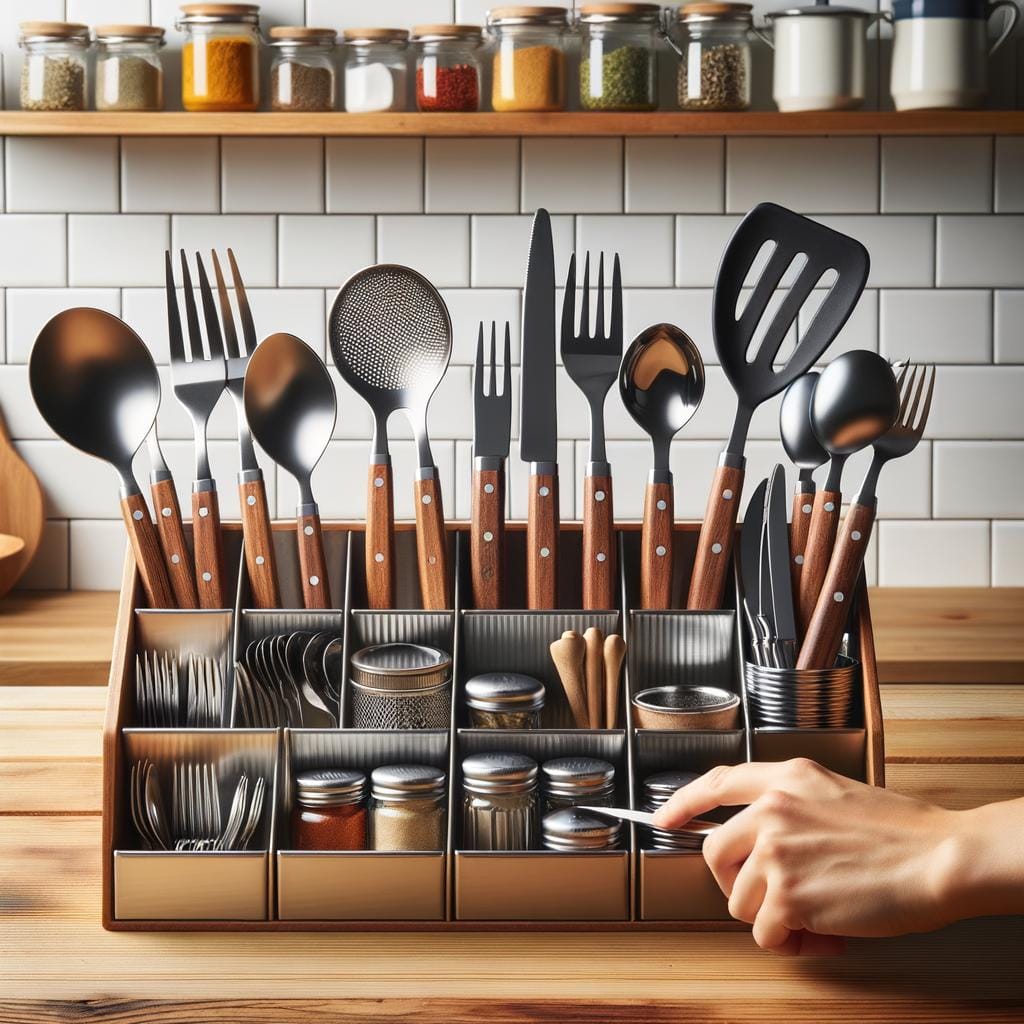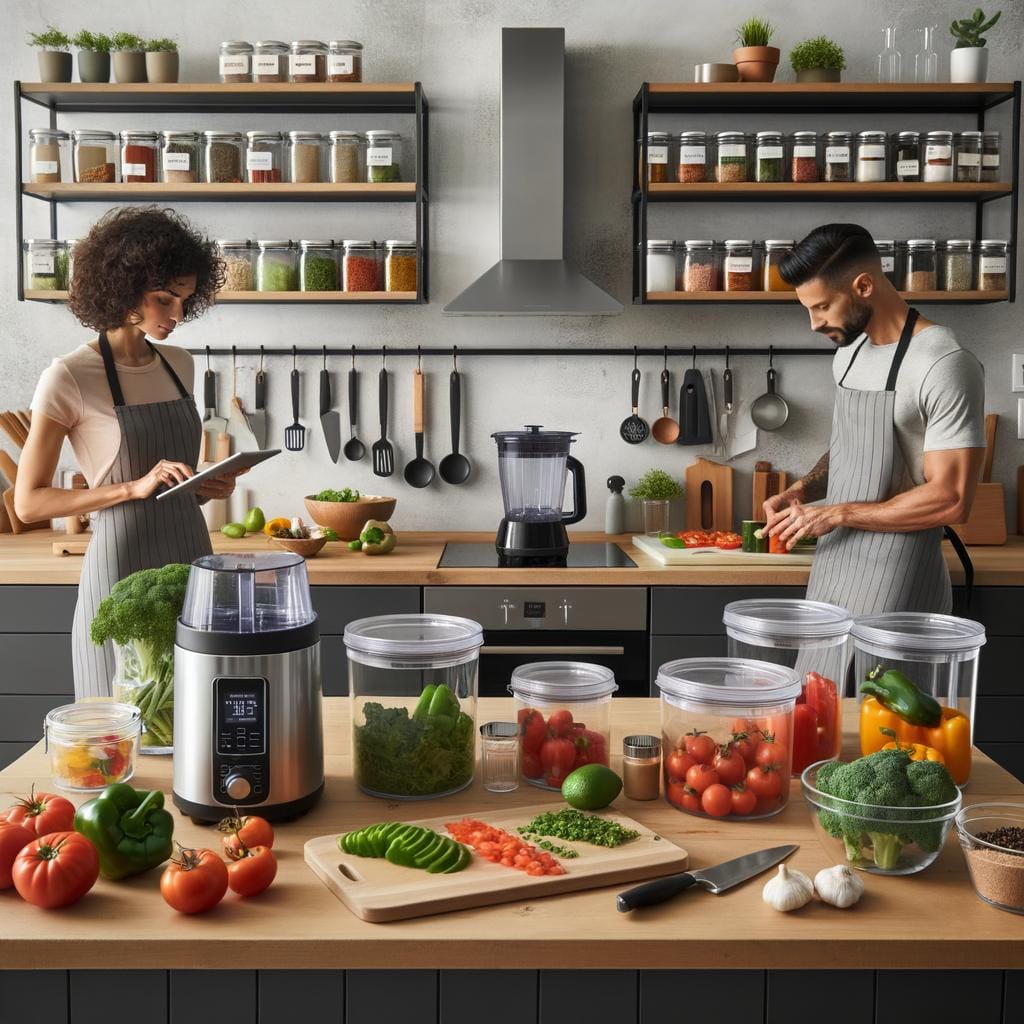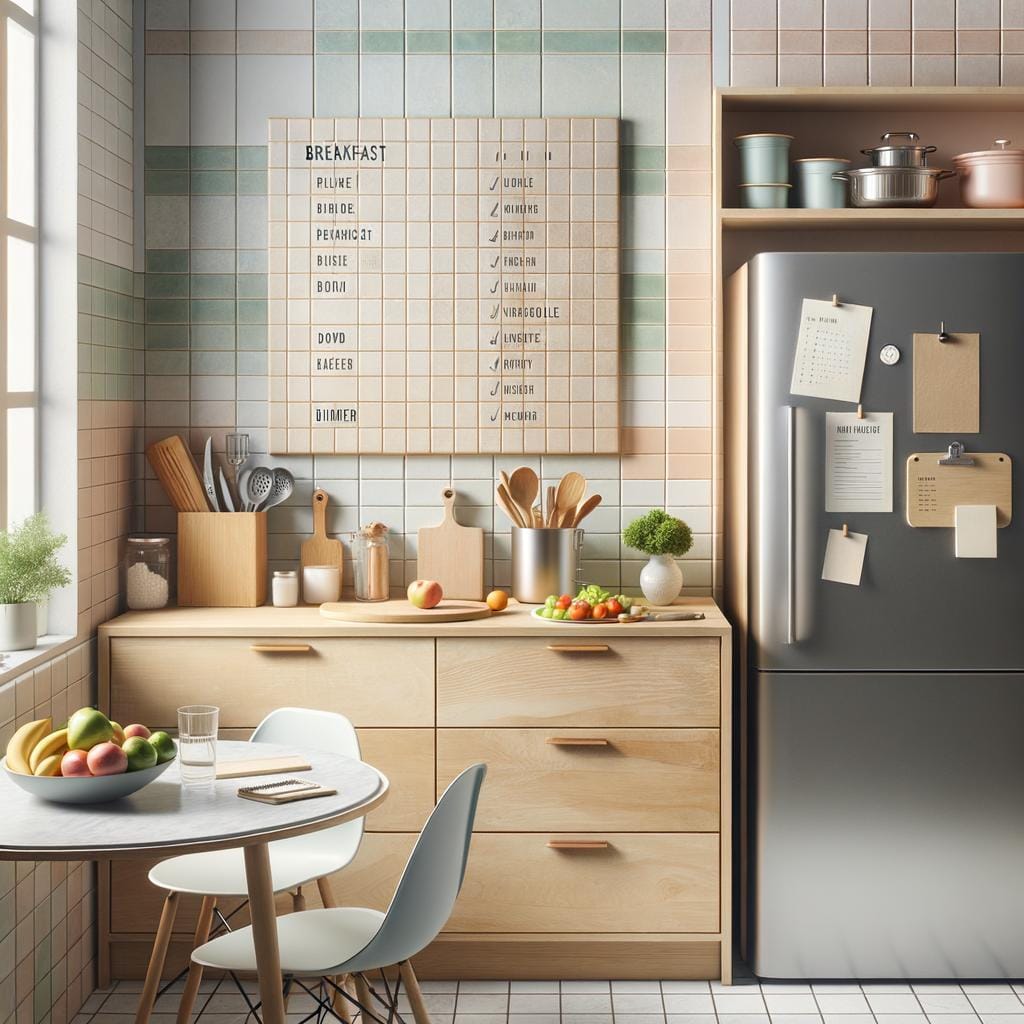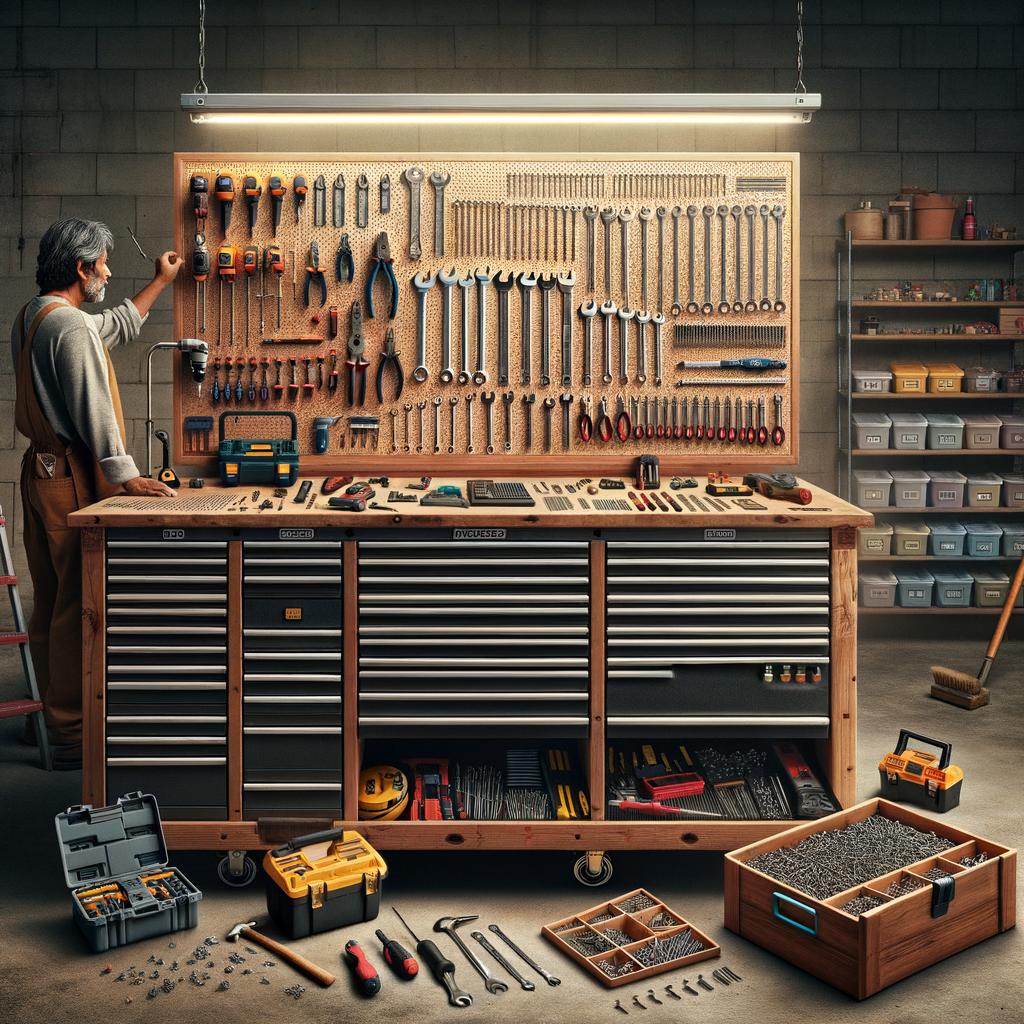A well-organized kitchen is essential for efficient meal preparation and cooking. Utensil sorting plays a crucial role in maintaining order in your kitchen and ensuring that you can easily find the right tool when needed. From spatulas to whisks, organizing your utensils can save you time and frustration during meal prep.
When it comes to utensil sorting, many people face common challenges such as cluttered drawers, misplaced items, and difficulty accessing the tools they need. These challenges can lead to inefficiency in the kitchen and may even discourage you from cooking altogether. By implementing a system for sorting your utensils, you can overcome these obstacles and create a more functional cooking space.
To start your utensil sorting project, begin by clearing out your drawer or storage space and assessing all of your utensils. Sort them based on their function, material, or size to determine the best method of organization for your needs. By decluttering and categorizing your utensils, you can create a system that works for you and makes meal preparation easier and more enjoyable.
Common Challenges When Sorting Utensils
Sorting and organizing kitchen utensils may seem like a simple task, but it can come with its own set of challenges. One common challenge when sorting utensils is determining the criteria for categorization. With a wide variety of utensils available, from spatulas to ladles to whisks, it can be overwhelming to decide how to group them together effectively. Deciding whether to sort by function, material, size, or another factor can be a daunting task.
Overcoming Decision Fatigue
Another challenge when sorting utensils is decision fatigue. When faced with a large number of items to organize, it’s easy to become overwhelmed and tempted to simply throw everything into a drawer haphazardly. To overcome decision fatigue, consider breaking down the sorting process into smaller tasks. Start by tackling one category of utensils at a time, such as all the wooden utensils or all the baking tools. This approach can help make the process more manageable and less overwhelming.
Limited Drawer Space
Limited drawer space is also a common challenge when sorting utensils. While it’s important to have easy access to your most frequently used utensils, having too many in one drawer can lead to clutter and disorganization. One solution is to use drawer organizers or dividers to create separate sections for different types of utensils.
Alternatively, consider hanging some utensils on hooks or installing a wall-mounted rack to free up drawer space for other items. By thinking creatively about storage solutions, you can make the most of your kitchen space while keeping your utensils organized.
How to Start Your Utensil Sorting Project
When starting your utensil sorting project, the first step is to empty out your utensil drawer or designated storage area. Take out all the utensils and lay them out on a clean surface so you can see exactly what you have. This process allows you to assess the quantity and condition of your utensils before categorizing and organizing them effectively.
Next, it’s important to categorize your utensils based on their function, material, or size. You can create separate piles for cooking tools, baking utensils, serving spoons, wooden versus metal utensils, and large versus small items. This will make it easier for you to decide how you want to organize and store them in your kitchen.
Once you have categorized your utensils, consider what storage solutions will work best for your needs. Some options include using drawer dividers, utensil trays, hanging racks, or countertop containers. Choose storage solutions that fit the size and quantity of your utensils while also allowing for easy access when cooking. By following these steps and being intentional with your organization process, you can create a well-organized and functional kitchen space that makes meal preparation more efficient.
Different Methods for Sorting Utensils (Eg by Function, Material, Size)
When it comes to sorting your utensils, there are various methods you can use to make the task easier and more efficient. By categorizing your kitchen tools effectively, you can not only maintain a clutter-free space but also streamline your cooking process. Here are some different methods for sorting utensils that you can consider implementing in your kitchen:
- By Function: One of the simplest ways to sort your utensils is by grouping them according to their function. This means keeping all the cutting tools together, such as knives and scissors, in one section of your drawer or container. Similarly, place all your stirring and mixing tools like spatulas and whisks in another designated area.
- By Material: Another way to organize your utensils is by material type. You can separate metal utensils from silicone or wooden ones to prevent any damage that may occur due to friction between different materials.
- By Size: Sorting utensils by size can also be a practical approach, especially if you have limited storage space. Keep larger items like serving spoons and ladles in one section while placing smaller tools like measuring spoons and peelers in a separate compartment.
Using these methods for utensil sorting will not only help you keep track of your kitchen tools but also make it easier to locate exactly what you need when cooking or baking. By taking the time to categorize your utensils properly, you can maximize the efficiency of your kitchen workflow and enjoy a well-organized cooking space.
Essential Tools for Utensil Sorting
When embarking on a utensil sorting project in your kitchen, having the right tools at your disposal can make the process smoother and more efficient. One essential tool for utensil sorting is a sturdy and spacious organizer or drawer divider. These items help to keep your utensils neatly separated and easily accessible, preventing them from getting jumbled together and causing frustration when trying to find a specific tool.
Labels and Markers
In addition to organizers, labels and markers are crucial tools for utensil sorting. By clearly labeling where each type of utensil should be stored, you can maintain your system over time and easily identify any misplaced items. Whether using color-coded stickers or written labels, this simple step can save you time and effort in the long run by ensuring that everything has its designated place.
Cleaning Supplies
Cleaning supplies such as microfiber cloths, mild detergent, and polish are also important tools for utensil sorting. Before organizing your utensils, take the time to clean them thoroughly to remove any built-up grime or residue. Not only will this make it easier to see which utensils you have and their condition, but it will also help prevent cross-contamination between different tools.
Tips for Maintaining Your Organized Utensil Drawer
Maintaining an organized utensil drawer is key to ensuring your kitchen remains efficient and clutter-free. After going through the process of sorting your utensils, it’s important to establish habits that will help you maintain this order. Here are some tips to help you keep your utensil drawer organized:
- Regularly declutter: Just like with any other area in your home, it’s important to regularly go through your utensil drawer and remove items that you no longer use or need. This will prevent unnecessary clutter from building up.
- Assign designated spots: Designate specific spots in your drawer for each type of utensil. This will make it easier for you to quickly locate what you need and also ensure that everything has its place.
- Use dividers or containers: Consider using dividers or containers within your utensil drawer to keep everything separated and organized. This will prevent items from shifting around and getting mixed up.
Additionally, here are a few more tips for maintaining an organized utensil drawer:
- Clean regularly: Make sure to regularly clean out the inside of your utensil drawer to remove any dust, crumbs, or spills that may accumulate over time.
- Rotate seasonal items: If you have utensils that are only used during certain times of the year (e.g. holiday-specific tools), consider rotating them in and out of storage to free up space in your main drawer.
- Label containers: If you use containers or bins within your drawer, consider labeling them so everyone in the household knows where each item belongs. This can help maintain order even when multiple people are using the utensils.
By implementing these maintenance tips into your routine, you can ensure that your carefully sorted utensil drawer stays organized and functional for the long term.
Creative Storage Solutions for Utensils
When it comes to utensil sorting, finding creative storage solutions can make all the difference in maintaining an organized kitchen. One popular method is using a pegboard on the wall to hang various utensils such as spatulas, ladles, and whisks. This not only keeps these items easily accessible but also adds a decorative touch to the kitchen. Additionally, magnetic strips mounted on the wall are another innovative way to store metal utensils like knives, scissors, and bottle openers.
Another creative storage solution for utensils is utilizing under-cabinet space. Installing hooks or small shelves underneath your cabinets can free up valuable drawer space while keeping frequently used tools within reach. This method works well for storing measuring cups, spoons, and other smaller utensils that tend to clutter drawers. Drawer dividers are also helpful in keeping larger utensils like serving spoons and tongs neatly organized and separated.
Furthermore, repurposing everyday items for utensil storage can add a unique touch to your kitchen decor. For example, using mason jars or ceramic crocks as holders for cooking utensils can add a rustic or charming element to your kitchen countertop. This not only serves as a functional way of storing utensils but also allows you to showcase your personal style in the heart of your home.
| Creative Storage Solutions | Benefits |
|---|---|
| Pegboard on the wall | Easy access and decorative touch |
| Magnetic strips mounted on the wall | Efficient storage for metal utensils |
| Utilizing under-cabinet space | Saves drawer space and keeps tools accessible |
| Repurposing mason jars or ceramic crocks | Adds charm while storing utensils creatively |
Upcycling Ideas for Unused or Old Utensils
One creative way to repurpose unused or old utensils is by turning them into decorative items for your home. For instance, you can transform old spoons into unique and stylish hooks to hang keys or jewelry. Simply bend the handle of the spoon using pliers to create a hook shape, and then mount it on a wall or door. This not only gives new life to your old utensils but also adds a touch of personality to your space.
Another upcycling idea for unused utensils is to create a one-of-a-kind wind chime. Collect various utensils like forks, knives, and spoons, drill holes in the handles, and string them together with wire or twine. Hang the utensil wind chime in your garden or on your porch to add a whimsical element to your outdoor decor. Not only does this project reduce waste by repurposing old items, but it also allows you to showcase your creativity.
If you have a collection of mismatched or odd-shaped utensils that you no longer use, consider turning them into plant markers for your garden. Simply write the names of different herbs or plants on the handles of the utensils using waterproof markers.
Insert the handles into the soil next to each plant to label and organize your garden effectively. This simple and eco-friendly upcycling idea not only helps you stay organized but also adds a charming touch to your outdoor space.
| Utensil Upcycling Ideas | Description |
|---|---|
| Decorative Spoon Hooks | Transform old spoons into stylish hooks for hanging keys or jewelry. |
| Utensil Wind Chime | Create a unique wind chime using drilled utensils like forks and knives. |
| Plant Markers | Repurpose mismatched utensils as garden markers by labeling herbs and plants. |
Conclusion
Having a well-organized utensil drawer can make a significant difference in your kitchen’s efficiency and overall aesthetic. By sorting your utensils effectively, you can easily find the tools you need when cooking, saving you time and frustration. Additionally, a tidy utensil drawer can help streamline your meal preparation process and inspire creativity in the kitchen.
One of the key benefits of maintaining an organized utensil drawer is that it promotes cleanliness and hygiene. When your utensils are neatly sorted and stored, it is easier to keep them clean and free of food residue or bacteria buildup. This not only ensures that your cooking tools are safe to use but also contributes to a healthier cooking environment for you and your family.
In conclusion, investing time in utensil sorting and organization is a small yet impactful way to improve your kitchen space. With the right tools, methods, and storage solutions, you can create a functional and visually pleasing utensil drawer that enhances your cooking experience. So take on the challenge of utensil sorting today, reap the benefits of a well-organized kitchen, and enjoy the ease and efficiency it brings to your culinary adventures.
Frequently Asked Questions
What Order Does Silverware Go in the Drawer?
Silverware should be organized in the drawer with forks on the left, knives in the middle, and spoons on the right. This ensures easy access and a neat appearance when opening the drawer.
How Does the Sorting the Cutlery Activity Satisfy the Child’s Need for Order?
Sorting cutlery can satisfy a child’s need for order by providing them with a clear structure and organization. It teaches them how to categorize objects, develop fine motor skills, and promotes a sense of accomplishment when everything is neatly arranged.
How Do You Store Silverware Without Drawers?
Storing silverware without drawers can be achieved by using various methods such as countertop utensil holders, hanging racks on walls or cabinets, or utilizing dividers within cabinets or shelves. These alternatives help keep silverware organized and easily accessible.

Hello, I’m April Denton, your go-to expert for all things home decluttering and organization. With over a decade of experience helping individuals transform their living spaces into serene, clutter-free sanctuaries, I am passionate about the life-changing benefits of decluttering. My journey into the world of organization began out of necessity, juggling a busy career and a bustling household. I quickly realized that a well-organized home was the key to a more balanced, stress-free life.





